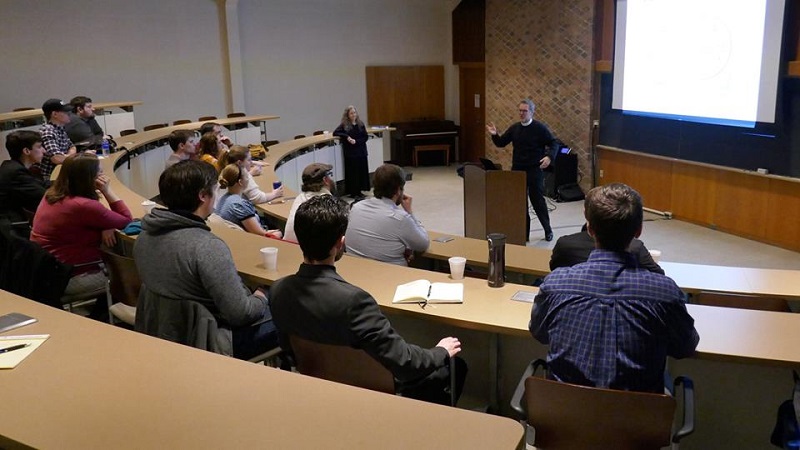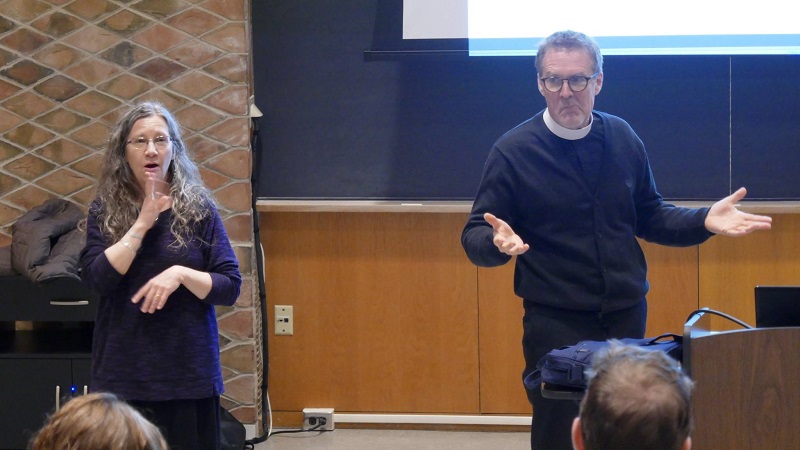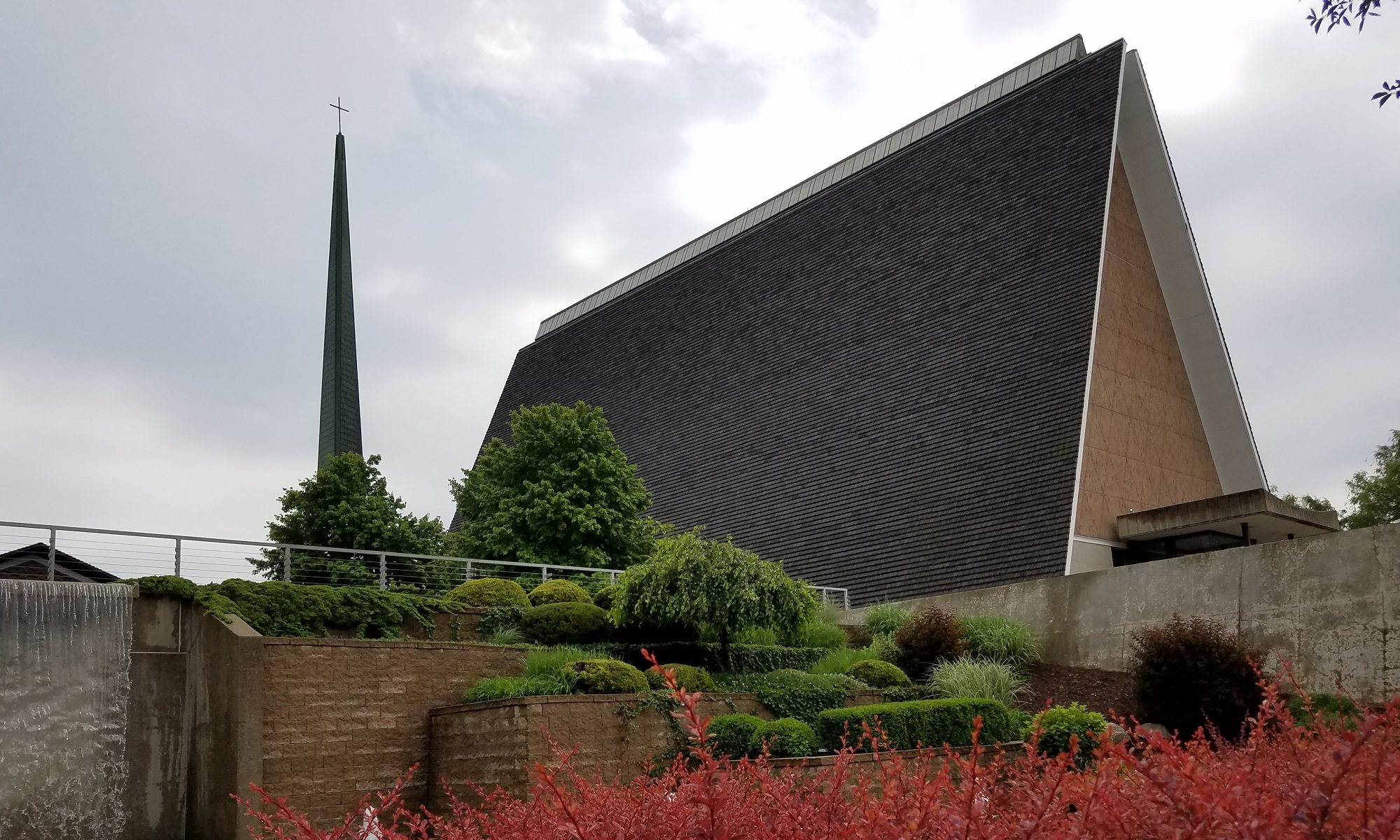
This week’s convocation hour was on “Deaf Ministry in the Local Congregation,” presented by Rev. Thomas Dunseth. Pastor Dunseth is Director of Lutheran Friends of the Deaf with the Mill Neck Family of Organizations, who are close partners and friends with CTSFW. They fund Adjunct Professor of Deaf Ministry Peggy Krueger, who teaches Deaf Ministry classes here on campus. Mill Neck also runs the Church Interpreter Training Institute (CITI), hosted here on campus every summer.
Pastor Dunseth began by explaining that his intention with the talk was to help our students better understand the needs of Deaf people. “It’s not imperative as a professional church worker that you learn sign language,” he said. “My intention is to make you comfortable with it.” The point is to bring Christ to this community by giving them access to the Divine Service.
The basic facts are these: 684 million people worldwide have hearing loss, 80% of whom live in underdeveloped nations. Nearly 50 million are Americans; in the US, three out of 1,000 children are born deaf or hard of hearing. Depression and isolation are common problems, especially among those who lose their hearing later in life. Most people with hearing loss do not have access to the Word of God in a Christian congregation.
There are many different kinds of Deaf people as well. There are those who lose their hearing later in life, such as senior citizens, veterans (60% of whom come back with hearing loss), and one out of five teenagers (because of things like earbuds). Some Deaf people learn only American Sign Language (ASL), others are oral learning only (lip reading), while there is also a language style known as total communication, which is a combination of both ASL and oral English.
Cochlear implants are themselves controversial in the Deaf community. While they are not guaranteed to work for everyone, there are also many Deaf people who feel that the cochlear implants are in danger of taking away their heritage and language. For example, Peggy Krueger spoke of a Deaf couple overjoyed when their third child was born deaf–because they are proud of their culture and happy to share it with their child.
There are also cultural differences between the Deaf community and those who can hear. Some differences:
1. Deaf people cannot overhear anything, cutting them off from the information that many hearing people don’t realize they pick up while busy doing something else.
2. Deaf people communicate very bluntly. If they notice that you have gained weight, they’ll say so. The observation isn’t remotely rude; just a part of the culture.
3. Looking away while communicating is discourteous and difficult. Grammar in ASL comes from facial expressions and eye contact. If a Deaf person doesn’t want to hear you, they will shut their eyes (much like putting your fingers in your ears and shouting “lalala!”).
4. Shouting and/or emphasizing your lip movements is incredibly unhelpful to a Deaf person. Deaf people who are taught orally learn to read natural lip movements. Even then it’s difficult: only 20-25% of what you say is visible. The rest is hidden behind your teeth.
5. Deaf people don’t know what can and cannot be heard. They often eat noisily and have audible bodily noises. Peggy, who also works at a video relay center translating live phone calls by signing a conversation visually on the phone screen and speaking to the hearing person on the other line, noted that she’ll also indicate secondary sounds to her clients (like a baby crying, or a dog barking in the background) to help give context. She once signed that whoever was on the phone was walking away, to indicate their distraction. “Walk make sound?” her client signed back, shocked.
6. And one last note: Do not use the phrases “The Deaf” or “hearing impaired.” The proper alternatives are “Deaf people” and “hard of hearing.”
Both Pastor Dunseth and Peggy also discussed some practicalities when serving Deaf people. Lighting, for example, is important. If you bring the lights all the way down during Good Friday service, anyone depending on a visual interpreter will be lost. It’s also best if the interpreter stands right next to the pastor so that they can simultaneously see the interpreter sign and read the pastor’s lips if needed. Wandering pastors (who talk and walk to make their point) make this very difficult to do.
She also explained the importance of working with the interpreter: giving him or her the sermon ahead of time, making yourself available so that the interpreter can ask questions about the meaning of words as they figure out how to sign certain words, etc.
Ultimately, interpreters are theologians. The interpreter hears with their ears, and the Deaf person hears with their eyes—through the words being expressed with the interpreter’s body and hands.
“The way we sign reflects our theology,” Pastor Dunseth explained. You convey theology through the things you point to and the way you explain theological concepts. Baptists, for example, use a sign indicating full immersion for Baptism. It looks different for Lutherans: often a sprinkling motion.
Here at CTSFW, classes are broken down into Deaf Ministry 1, 2, and 3. The course prioritizes language acquisition, beginning with Deaf Ministry 1 as an ASL teaching course. Students in Deaf Ministry 2 then start to introduce specifically theological language. Deaf Ministry 3 is tied deeply into chapel. You have likely seen these students on our daily chapel livestreams, signing during the service in the Spring Quarter.
If you would like to learn more about Deaf Ministry, the following are excellent resources:
Mill Neck & Lutheran Friends of the Deaf
The Church Interpreter Training Institute
Ephphatha Lutheran Mission Society for the Deaf

